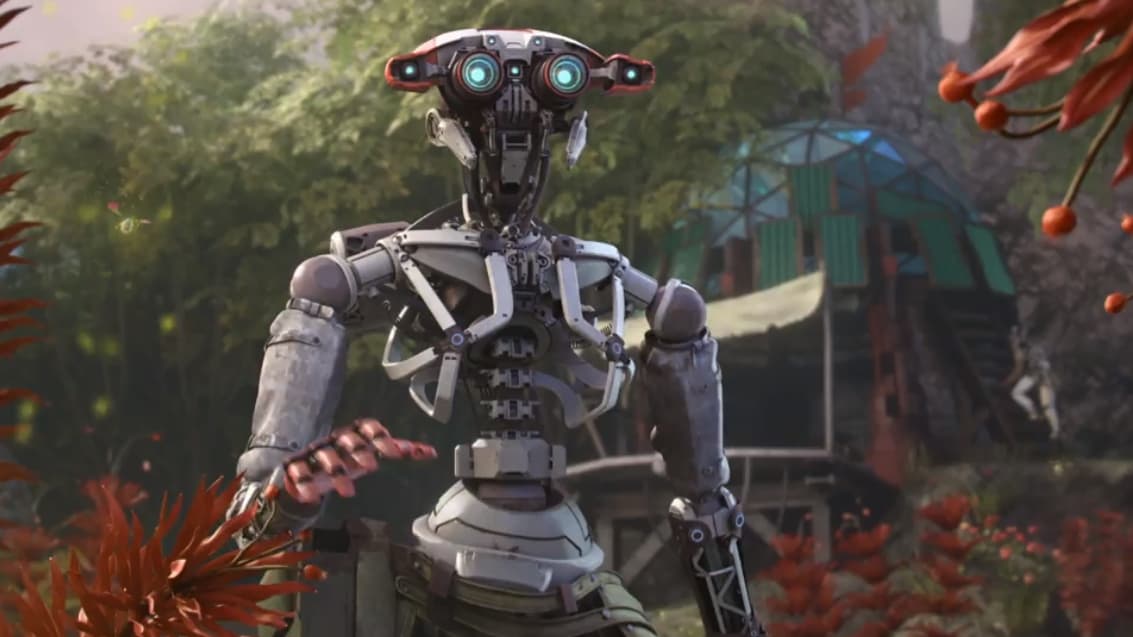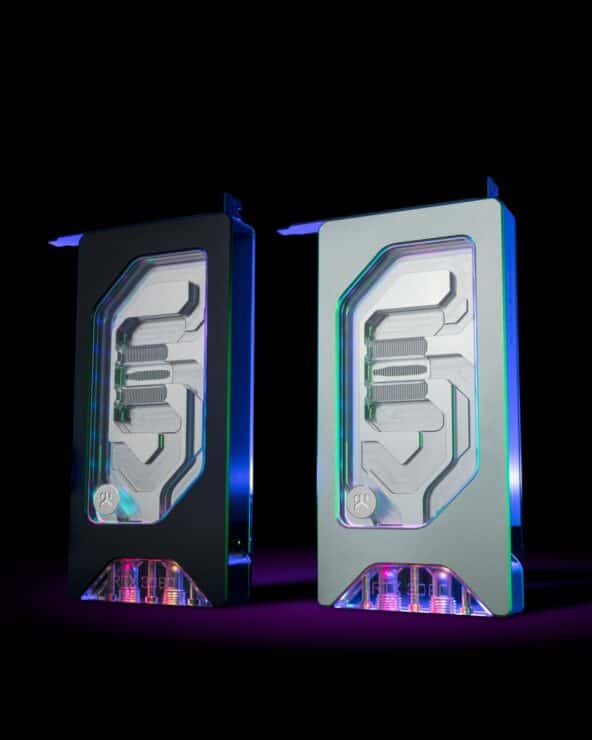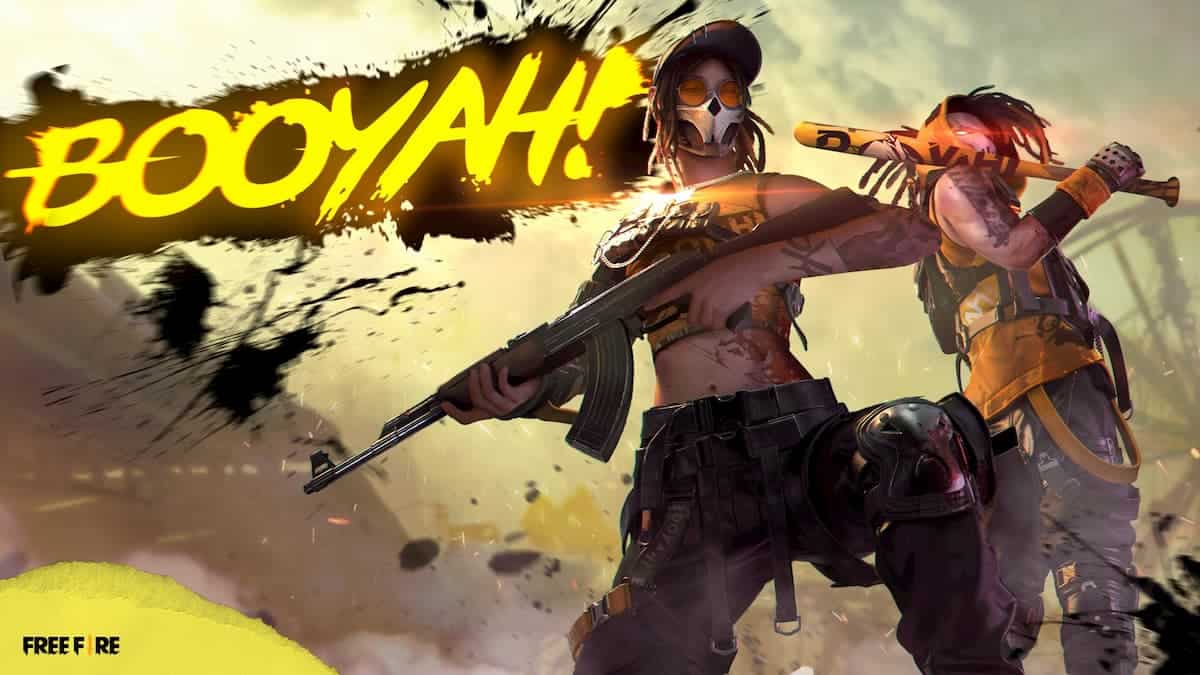
What is it? An ambitious Oculus Rift-exclusive shooter full of Far Cry-style outposts.
Expect to pay $40/£30
Developer: Insomniac Games
Publisher: Oculus Studios
Reviewed on: GTX 1070, Intel i7-8750H, 16GB RAM
Multiplayer: Two-player online co-op
Link: Official site
Buy it: Oculus
In small doses, Stormland soars above other VR shooters. As I scale its vast sci-fi bases, each vantage point makes me rethink my plan for dispatching the group of robots below. I could glide through a window, arms outstretched like Superman, to get behind a machine gunner and rip the health tank from its back. I could hurl myself up a nearby tower using fluid climbing controls, and set up a sniper’s nest. Or I could grab the discarded gun at my feet and tear it apart with my bare hands, turning each half into an explosive hunk of metal, ready to throw. At its best, playing Stormland reminds me of clearing outposts in a Far Cry game, but with a lot more freedom.
Unfortunately, Stormland isn’t made to be played in small doses, and it stretches its combat too thinly over a five-hour story and an expansive open world endgame beyond. It wants to be the first proper live-service VR shooter—every Tuesday its world will change, with new map layouts, enemy modifiers and a skill reset—but as much as I enjoy its moment-to-moment gunplay and movement, its quest structure is too repetitive to keep me coming back week after week.
Light drizzle
Stormland is a slow starter. Its story about a group of robots in the aftermath of a catastrophic event is generic sci-fi: characters are cheerful but lack humor, and only Nix, the robot you spend most of the story searching for, comes close to having a believable personality. As a tutorial for the endgame, it works, and it explains its complex systems clearly, but it takes too long to get to the point.
With the main story discarded, your goal is to beat the Terminus, Stormland’s final mission. To reach it, you must first travel through three themed realms sequentially, beating outposts in each one to unlock portals to the next zone. Within each realm the outposts look roughly the same as each other, but they’re large and open, with multiple towers to climb and endless angles of attack, which makes firefights unique. I like to start at the highest point possible, working out my main approach plus a plan B for when it all inevitably goes wrong.
I love taking the most ridiculous path I can see, swinging between huge gaps and surviving by my virtual fingertips.
Stormland’s fluid movement gives you lots of tactical options. If you leap off an edge and hold both arms aloft, you’ll glide, quickly repositioning between tall towers to outmaneuver enemies. I’ve added a power-up that makes me slam the ground when I land, pulverising any nearby robots. If you build up momentum by dropping groundward you can soar back up again, gaining extra height and moving your arms to curve your path. Even though you’re standing up if feels natural, thanks to the smooth turns and sound of rushing wind.
The flying is coupled with a superb climbing system that lets you scale basically every structure you can see. Holding down a Touch controller trigger generates a beam of light extending from your hand, tethering you to any surface. If you pull your hand down quickly and release the trigger, you’ll catapult upwards. Equally, you can climb one small swing at a time, as if on monkey bars, to navigate tricky corners and narrow gaps. It responds accurately to small movements, so I could do it for hours without getting tired.
The system turns every outpost into a movement puzzle as well as a combat challenge. I love taking the most ridiculous path I can see, swinging between huge gaps and surviving by my virtual fingertips. I rarely feel like it’s funneling me in a particular direction, and I constantly get the feeling I’m finding paths the designers didn’t expect. Whether that’s true or not, it’s a testament to the freedom Stormland gives you. Every support beam is a wall to scale, every elevator shaft a climbing frame that you use to slip around enemy defences.
Trigger happy
Once you’re in position to fire, the guns are punchy and tactile. You can really feel them react when you pull the trigger, and every weapon has enough recoil to keep you honest. Enemies lurch and stumble realistically when hit, and targeting weak points rewards you with a shower of sparks and damage numbers. My only complaint is with the controls, which are sometimes fiddly: the button to grip your weapon is the same as the one to climb, and if you’re near cover you sometimes grab it, rather than your weapon’s grip.
There are six weapons in total, including an SMG, grenade launcher, shotgun and semi-auto rifle, each with multiple upgrade levels that increase damage, accuracy and ammo capacity. None are standouts, and I’d prefer it if the upgrades added more unique behaviors, but the streamlined arsenal means I can master each weapon, creating a loadout to match my playstyle (dual-wielding SMGs plus a sniper fit the bill).
I wish all VR games had UIs this good.
Both weapon and skill upgrades—such as making headshot kills electrify nearby enemies—happen at work benches. They’re a sci-fi lover’s dream: holographic displays that bleep in all the right places, and you control them easily with a fingertip. I found the actual world of Stormland a little bland, and its islands blended into one another, but the fact you can glance at your wrist to see the map, or turn your hand over to bring up a floating objective menu really sold me on the fantasy. I wish all VR games had UIs this good.
I played solo most of the time, but I had more fun in co-op. You can play with friends or start a quick game with strangers at any time. This only worked for me during the story, and trying to go online during the endgame made me crash. Insomniac says it’s fixing that bug for launch. When I was paired up, I found it easy to communicate without a mic, using gestures to plan attacks. When a partner and I battled a small group of robots defending a big boss mech, we pointed to one flank each and popped up from cover to fire at the same time.
Surf’s up
While I look forward to each outpost battle, getting between them is nowhere near as fun. To move between islands you glide on a cloud-like sea, directing yourself over boosts with one of your hands. It never changes, and occasionally you’ll crest a peak only to reveal a massive death drop on the other side. Yes, you can see those holes when you pull up your map, but it’s awkward to do so while gliding, and the map doesn’t actually tell you your current location, which is confusing.
The outposts are also baked into a quest structure that quickly gets repetitive. Unlocking the first new realm after you’ve beaten the story involves clearing a single, specific outpost—for the next realm, you have to clear two outposts, and then three for the final realm. It’s hardly imaginative. Every time you boot up the game you start at base camp and have to first fly to the right realm, and then surf to wherever you left off, no doubt falling off an unseen edge in the process.
Side quests feel samey, too. I played one about unlocking a vault, which promised valuable loot inside. But first, I had to find three keys somewhere in the world, which meant clearing more outposts—some the same ones I was beating for the main mission—and hacking into satellite dishes. Only, some satellite dishes were broken, negating the effort I put into reaching them.
The repetition is typified by Terminus, the final mission. To complete it, you basically have to do the same thing six times in a row: fly to an enemy stronghold, find a key, plug the key into a machine, and power down the machine by ripping apart its glowing core. Granted, the first three keys are spread on separate islands while the final three exist on a multi-layered base, but the formula is the same. Keeping objectives clean and simple is always a good idea in VR, especially in a game this complex, but a little variety would’ve been welcome.
I admire Stormland’s ambition, and both its open-world shooting and traversal feel like a genuine step forward for VR.
Terminus has a problem with checkpointing, too. As the last hurrah, it’s fair that it’s not littered with save points. But if you turn off your headset at any point then not only do you lose all your progress, but you’ll restart the game in base camp, and you’ll have to spend another 15 minutes just getting back to the Terminus portal. I lost an hour of more or progress on multiple occasions just because I had to leave my house. It’s tiring. If you die during Terminus, you’ll simply respawn at a checkpoint early in the run, and I don’t know why it’s not the same if you quit.
The weekly roll-overs, from what I’ve played, do little to mix it up. I like the progression reset mechanic, which turns acquired items and unlocks into a general growth resource, allowing you to respec and try a different approach. But I spent some time with this week’s new map, and I could barely tell it had changed, probably partly because all the islands blended into one another in the first place. Yes, some sections had shifted around, and secrets are in different places, but it’s basically shuffling puzzle pieces rather than laying down a whole new challenge. I don’t think I can stomach unlocking each realm in turn all over again just to reach Terminus.
I admire Stormland’s open-world shooting and traversal, which feel like genuine steps forward for VR. The UI is inspired, the upgrade system smart, and its co-op shows a lot of promise. But as an evolving live game, it hasn’t shown me enough to make me want to strap on my headset again next week.
Read our review policy
Excellent VR combat and movement wedged inside a repetitive quest system.





More Stories
Firefighting Simulator – The Squad review — Through the fire and the shame
Maid of Sker review — Death in the slow lane
PHOGS! review – It’s a dog-help-dog world out there